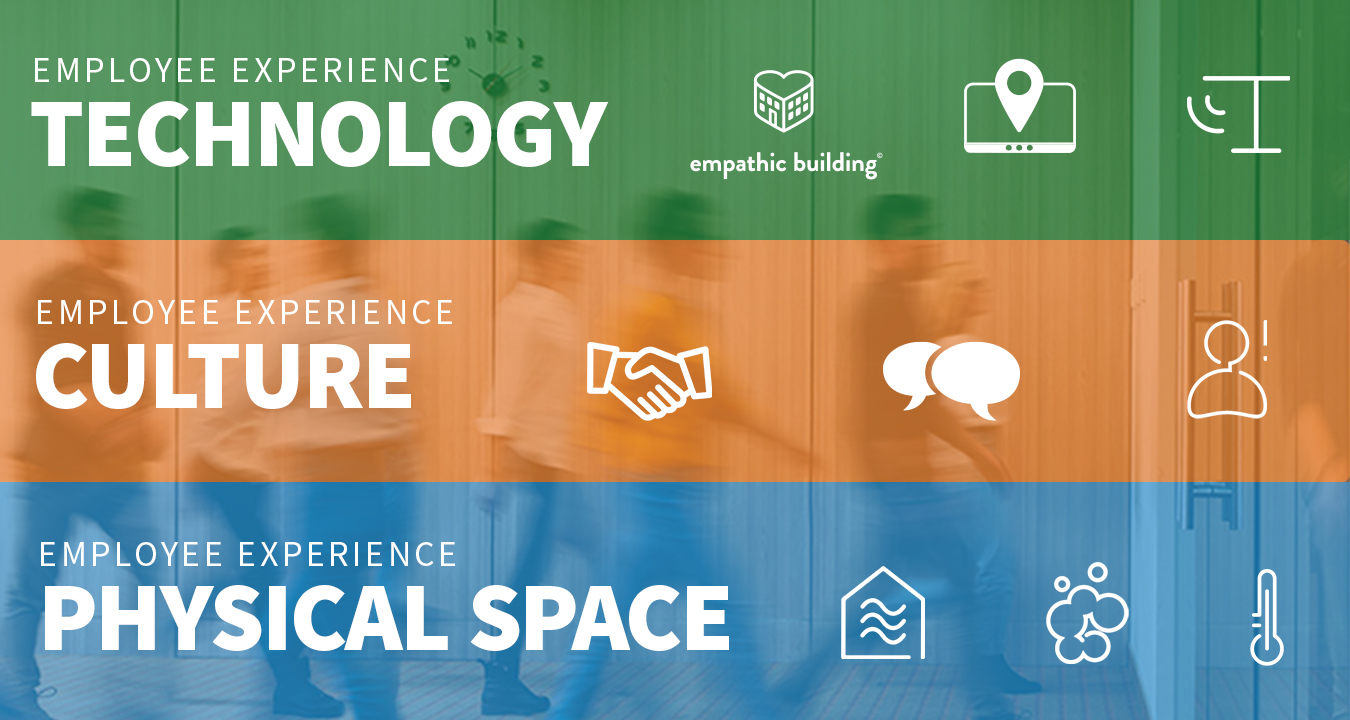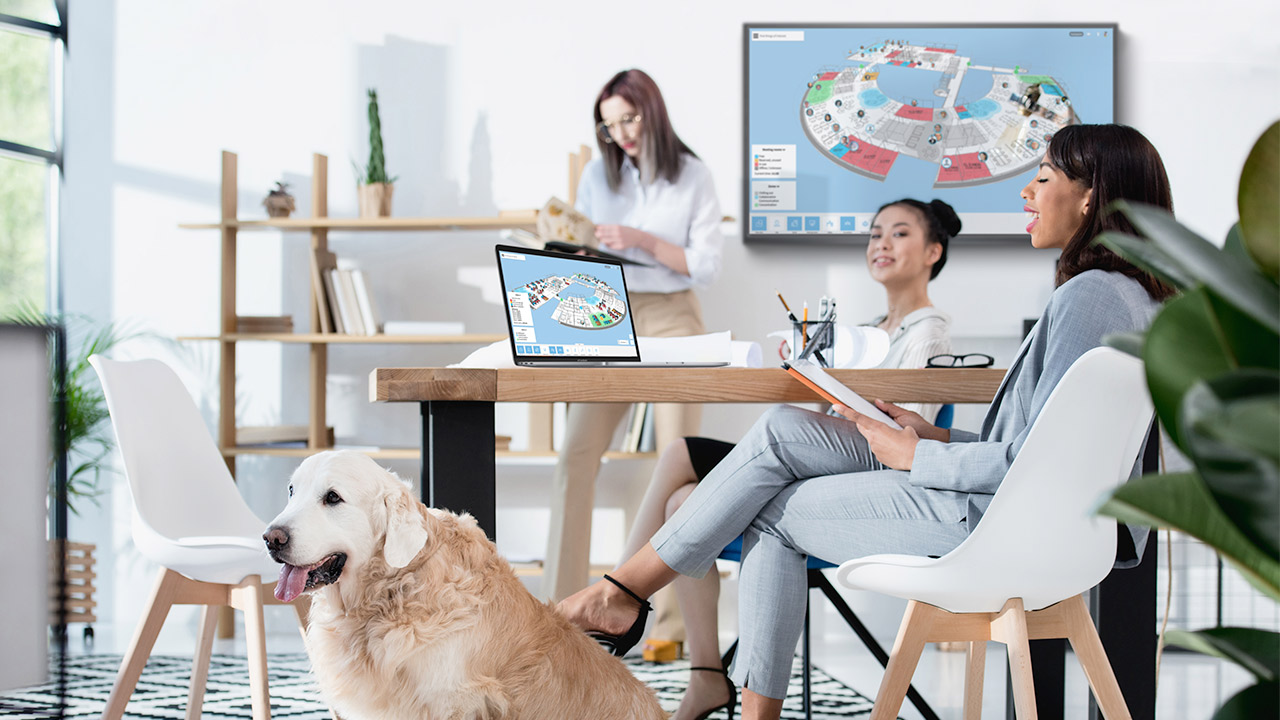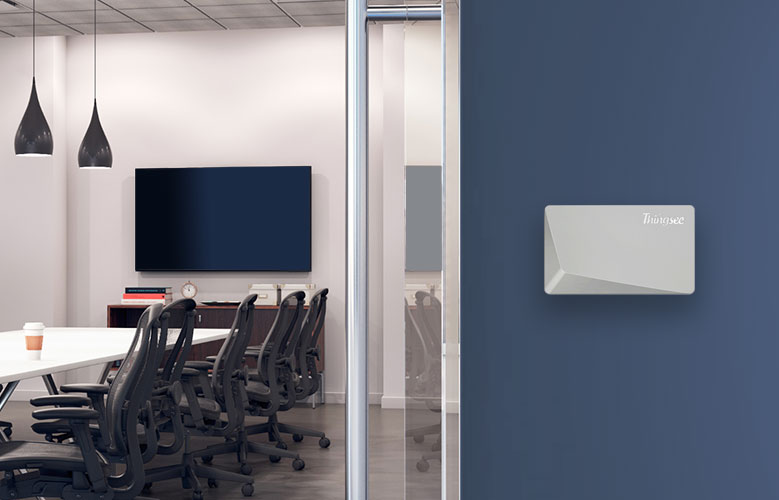Improve your employee experience with a digital twin
The ingredients of a good employee experience might be hard to catch. Modern companies already know that employee experience is something they need to invest in, but many don’t know where to start.
For Haltian, building good employee experiences is not about increasing productivity, but rather removing things that kill productivity: tedious admin work, looking for rooms, bad air quality, working with broken equipment, and standing in line for 30 minutes on your lunch break… you name it! We believe that good employee experience begins with making things easy. It means using tools that save time, make collaboration easier, give you flexibility and choice, and make it easier to share your voice and feelings.
In this article, we have gathered all the information you need to know about how to improve employee experience with our Empathic Building digital twin. Let’s get started!
Table of content
What is the basis of a good employee experience?
Technology
- What is Empathic Building?
- A human-centric Approach to Smart Buildings
- IoT for smart buildings
Culture
- Agile workplace
- Hot desking
- Leadership is changing
Physical space
- Indoor air quality
- How to measure indoor air quality
- Facility maintenance and employee experience
Parting words

What are the basis of a good employee experience?
In modern offices, employee experience can be said to be built from three elements: technology, work culture, and physical space. When all of these elements work, they boost well-being, happiness, success, and performance. The technology side of employee experience includes all the computers, office management systems, digital twins, and building automation that are in use. Work culture includes, for example, ways of cooperation, leadership styles, and flexibility in the work environment. Finally, the aspect of physical space consists of things like cleanliness, equipment, air quality, temperature, and noise levels. All of these together are known to add up to the employee experience and Empathic Building digital twin is a solution that aims to improve each and every one of them.

What is Empathic Building?
Haltian Empathic Building is a smart building solution that increases employee happiness by solving the everyday end-user problems we all face at the office. The solution gathers data from IoT devices that measure things like occupancy, air quality, and indoor positioning. In addition, the users themselves can give feedback and make service tickets. The Empathic Building digital twin visualizes all this data for the use of the employees. Furthermore, the data can be analyzed and reported to leadership and facility management teams to support better decision-making. Empathic Buildings aims to improve employee experience by making every work day easier.
Learn more about Empathic Building from the article the future of smart buildings is Empathic, Head of Empathic Building Tomi Teikko, tells all about Empathic Building and reveals some future plans for the solution.

Human-centric approach to smart buildings
The human-centric approach of Empathic Building is based on the knowledge that a smooth, intuitive working environment leads to a motivated and happy workforce, giving a boost in employee productivity. Empathic Building aims to reduce time-consuming admin work from your workday by making booking meeting rooms unnecessary, helping you find the perfect place to work, and finding your coworkers easily.
IoT for smart buildings
Smart buildings are certainly one of the biggest buzzwords around IoT today, but what does it take to make a building smart? There are a lot of solutions out there, but things like scalability, integration, and security put strict requirements on any IoT solution, and make choosing the right one a difficult task.
The number of IoT devices is growing rapidly and most companies have already implemented some IoT solutions to their offices, or are considering it. We have gathered the key drivers to consider in IoT for smart buildings that can give you a competitive advantage in attracting the best people to your company.

Agile workplace
As said before, the expectations for workplaces have changed: employees no longer just want a desk and a coffee machine. What is needed, is an agile workplace that gives flexibility and choice, considering people’s individual life situations and working styles. While remote work has already been a part of many people’s work life, the COVID-19 pandemic finally made it a permanent part of many information workers’ lives.
Now, employers and real estate facilities are beginning to understand the full transformation of offices, as many people wish to work in a so-called hybrid mode where they might work part-time from home, and part-time at the office to get the best of both worlds. Learn more about the transformation of modern offices from our webinar Smart Buildings and facilities: Real-life value from IoT solutions.
Hot desking
To make the hybrid model of remote and office work possible, and get the most out of office spaces, many companies have taken on hot desking or activity-based working. This means that there are no longer dedicated seats for every employee. Instead, employees can choose a working space based on their needs when they come to the office. For work that requires concentration, you can choose a desk from a quiet area. Or, if you need to cooperate with someone, you can choose a working station near them! Other factors in choosing a work area can be the required equipment, the right temperature, or proximity to the coffee room.
Smart office solutions like Empathic Building Digital Twin enable hot desking by offering desk booking in advance, or ad-hoc booking, where your employees can check a free table from the Empathic Building Digital Twin on-the-go.
Leadership is changing
As said in the article The future of smart buildings is Empathic, smart offices are moving away from one-size-fits-all, top-down leadership. Good leaders are expected to have empathy and know what their employees are feeling and experiencing things.
“We are very genuinely lacking equipment for management so that they could measure true end-user experience. Yes, you can have very good leaders and team managers who are truly empathic in a way that they see how their employees feel about their work environment. But they are so rare.“
Tomi Teikko, Head of Empathic Building
We believe that smart solutions can help support empathic leadership by both helping to remove blocks that prevent workers from performing in the best possible way and by offering people better ways to voice their opinions and wishes.

According to the report Health, Wellbeing and Productivity in Offices: The Next Chapter for Green Building by the World Green Building Council, “a range of factors – from air quality and lighting to views of nature and interior layout – can affect the health, satisfaction, and job performance of office workers”. Simply put, the physical space of the office should offer more than just a desk to sit on, but an inspiring and healthy work environment.
Indoor air quality and right temperature play a big role
Many of us spend up to 90% of our time indoors. Yet, studies show that indoor air is often up to 5 times more polluted than outdoor air. In many cases the high number of sick leaves directly relates to indoor air quality. In addition, poor air quality in your facility can lead to issues with productivity, workplace satisfaction, and attendance. It is no wonder that companies are looking for ways to both measure and improve the air quality in their facilities.
How to measure indoor air quality?
To get a comprehensive view of the air quality status monitoring just the CO2 levels is not enough. Combining CO2 with measuring TVOC (Total Volatile Organic Compounds) -levels will give a better understanding of the overall indoor air quality. VOCs are responsible for odors, scents, and perfumes as well as pollutants. They are caused by things like chemicals, gas fumes, and mildew.
Haltian has developed an IoT sensor device for measuring indoor air quality called Thingsee AIR. Unlike most air quality sensors, Thingsee AIR is wireless, which makes installation easy and flexible. With devices such as Thingsee AIR, any building can be made smart without making huge investments in building technology. In addition to measuring CO2 and TVOC levels, Thingsee AIR measures temperature, humidity, barometric pressure, and light levels, making it a truly all-in-one device for any smart office solution.

Facility maintenance, cleaning, and employee experience
When thinking about good employee experience, facility maintenance, and cleaning may not even be on the top of the list. This is because cleanliness is considered a self-evident part of a good work environment. Nevertheless, cleaning is labor intensive and keeping up excellent cleanliness and hygiene levels in huge facilities takes time and resources.
By implementing smart cleaning solutions to facility maintenance, employees can trust their desks and meeting rooms are cleaned periodically and that the washrooms are always clean and stocked with paper and towels. In this whitepaper made together with our smart washroom customer Lindström Oy, we reveal how IoT solutions can help reduce facility maintenance costs and make better end-user experiences.
Parting words
So, how do you know if you offer a good employee experience to your workers? Employee experience can be hard to measure, and also hard to improve if you do not know where the problems are.
It’s important to remember that employee experience is affected by several factors, and it’s built from physical space, work culture, and the different technologies you use. Solutions like the Empathic Building can help you to improve all these areas, find bottlenecks, and help give your employees a voice.
By investing in your employee experience, you’re investing in your business’ success!
Get to know our Building Digital Twin.


